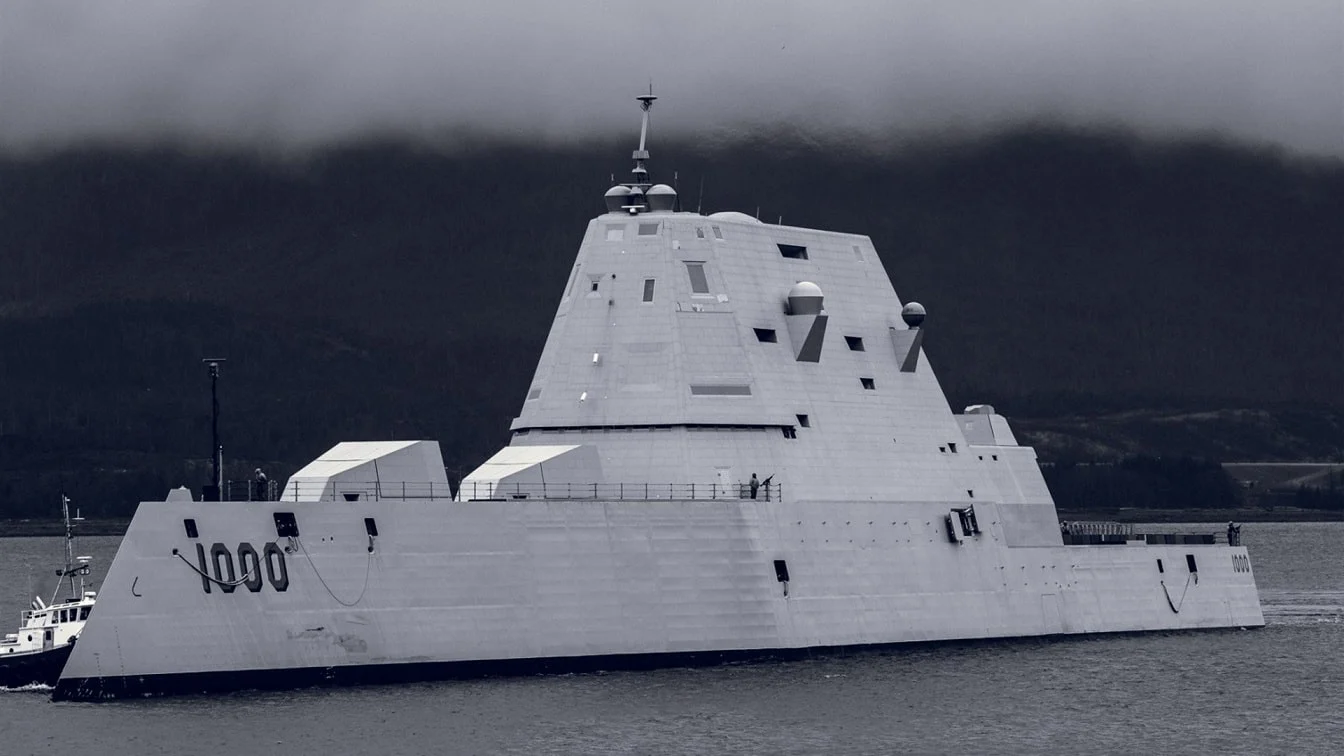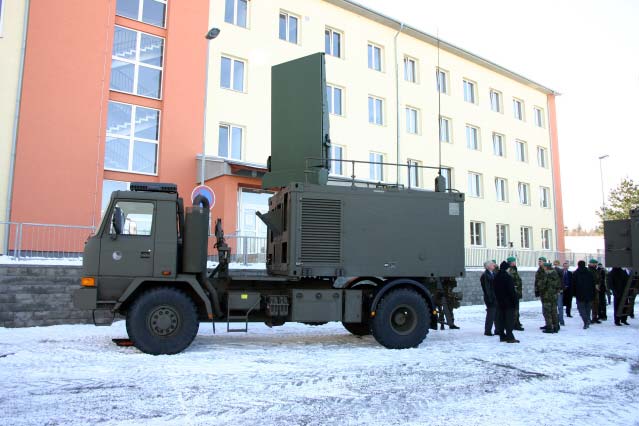The USS Zumwalt, a highly ambitious project by the US Navy, has been a subject of heated debate and controversy. Initially envisioned as the destroyer of the future, the Zumwalt-class destroyers were supposed to redefine naval warfare with cutting-edge technology, including stealth, automation, and mass firepower. However, the project quickly became an expensive undertaking, with cost of each ship reaching 8 billion USD. As a result, the Navy significantly scaled back the program, eventually building only three warships out of the planned 32. Despite its developmental and costing issues, the Zumwalt destroyers might soon turn the tide and redeem itself. This futuristic warship is set to become the first US Navy vessel equipped with hypersonic missiles, marking a significant technological leap.
The Zumwalt-class destroyers trace their origins to the Surface Combatant for the 21st Century (SC-21) program, launched in the 1990s. This program aimed to address the Navy’s perceived shortfall in naval gunfire support for amphibious operations and coastal battles. The retirement of the Iowa-class battleships, known for their massive 16-inch guns, left a capability gap that was planned to be filled by SC-21 program.
Since beginning, the SC-21 program faced a philosophical divide within the US Navy. One camp argued that modern combat required a reliance on missiles and aircraft for shore support, while another camp maintained that naval guns offered a cost-effective and sustainable option for prolonged bombardments. This debate, dubbed the “big guns versus more missiles” argument, highlighted the uncertainty in predicting future conflict scenarios.
The SC-21 program proposed three ship concepts, ultimately selecting a design that focused on naval gunfire support. The chosen design featured a displacement of over 16,000 tons, two 155mm Advanced Gun System (AGS) with Long-Range Land Attack Projectiles (LRLAP), and 80-cell Mk-57 vertical launch systems (VLS) for missiles. The program, now known as DD(X), laid the foundation for the Zumwalt-class destroyers, blending advanced stealth, automation, and firepower into a futuristic stealth design.
The Zumwalt-class destroyers’ most distinctive feature is their wave-piercing tumblehome hull design, which enhances stealth by significantly reducing the ship’s radar cross-section (RCS). This design makes the Zumwalt appear on radar as a much smaller vessel, i.e. like a fishing boat. Additionally, the ship boasts cutting-edge automation, reducing crew requirements by up to 50% compared to conventional destroyers.
The Advanced Gun System (AGS) was intended to be the Zumwalt’s mainstay, supposedly offering unparalleled accuracy and range. The AGS could fire GPS-guided shells capable of hitting targets up to 83 nautical miles away. However, the program faced a major setback when the cost of these specialized shells ballooned to nearly $1 million each, rendering them impractical. To make matters worse, the AGS was incompatible with standard naval ammunition in service with US Navy, thus leaving the Zumwalt’s guns without any firepower.
Despite these technical troubles, the Zumwalt-class ships retain a robust missile capability through 80 VLS cells capable of launching variety of missiles, including Tomahawk cruise missiles, and surface to air SM-series missiles and Evolved Sea-Sparrow Missiles (ESSM). This “more missiles” approach aligns with the Navy’s strategic shift toward precision-guided weaponry for high-stakes engagements.
Initially, the Navy planned to build 32 Zumwalt-class destroyers. However, budget overruns and shifting priorities led to significant cutbacks, ultimately resulting in only three ships: USS Zumwalt (DDG-1000), USS Michael Monsoor (DDG-1001), and USS Lyndon B. Johnson (DDG-1002). The drastic reduction in numbers eliminated economies of scale, further escalating costs and limiting the program’s practicality. The limited fleet size also raised questions about the Zumwalt’s operational role. With its guns rendered ineffective and its extremely high production and maintenance costs, the Zumwalt-class destroyers became notorious as “ships without a mission.”
Despite all troubles, ill-fated Zumwalt destroyers are all set to reclaim a new position in power-politics of Indo-Pacific as blue water strike platform instead of surface-fire support asset. USS Zumwalt has already received modification to carry Conventional Prompt Strike (CPS) hypersonic missiles. The cost-prohibitive 155mm AGS has been replaced by four Advanced Payload Modules each capable of carrying three CPS missile. Thus, beside 80 Mk-57 VLS silos, each Zumwalt destroyer will be able to launch 12 CPS hypersonic missiles. Similar modification of remaining two warships is expected in near future.
The integration of hypersonic missiles has turned Zumwalt destroyers as crucial asset for power balancing and deterring near-peer adversaries like China and Russia. Russia’s Zircon hypersonic cruise missile from Gorshkov class frigates, and China’s YJ-21 hypersonic missiles from Type-55 Renhai class destroyers, can been equalized by employing Zumwalt destroyers with CPS missiles. By leveraging their stealth and firepower, these ships could serve as formidable assets in future conflicts, particularly in highly contested naval environments. Moreover, US Navy will enjoy two key advantages related to launch platform and missile system. First, Zumwalt is highly survivable platform compared to Gorshkov class frigates and Renhai class destroyers due to its extremely low RCS and potent defensive suite. Second, CPS is hypersonic boost-glide missile with more range and outreach than Zircon and YJ-21. Only advantage in Russia and China disposal would be total number of missiles which can be deployed by warships since both Zircon and YJ-21, unlike CPS which require specialized APM, can be launched from standard VLS. This numeric advantage will be nullified by US Navy by using Virginia class nuclear-attack submarines for carrying CPS, thus restoring the balance in favor of U.S.
The Zumwalt-class destroyers program offers valuable lessons for future naval procurement. First, it highlights the risks of overreliance on unproven technologies and ambitious design goals. The advanced capabilities envisioned for the Zumwalt came at the cost of practicality and affordability, leading to significant failures. Second, the program illustrates the importance of adaptability in addressing changing strategic priorities. The Zumwalt’s shifting focus—from naval gunfire support to missile warfare—proves the challenges of aligning long-term projects with evolving threats and operational needs. And finally, the Zumwalt’s program emphasizes the need for balance between innovation and cost-effectiveness. While cutting-edge technology is essential for maintaining a competitive edge, it must be pursued while keeping sustainability and scalability in focus.
The Zumwalt program represents both the promise and pitfalls of modern naval innovation. Its stealth design, advanced automation, and superior fire-power make it a marvel of engineering, but its high costs and operational challenges have overshadowed its potential. However, with the integration of hypersonic missiles, the Zumwalt-class destroyers may yet prove their worth, emerging as key players in the US Navy’s strategic arsenal to counterbalance hypersonic developments by Russia and China and serve as conventional deterrent in naval domain.
Table of Contents
ToggleAhmad Ibrahim
Author is Research Associate at Pakistan Navy War College, Lahore.
- Ahmad Ibrahim














